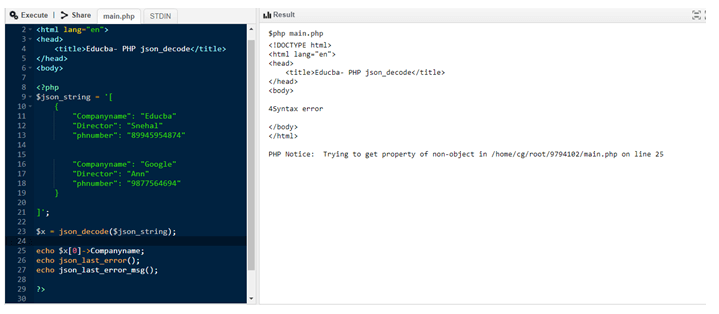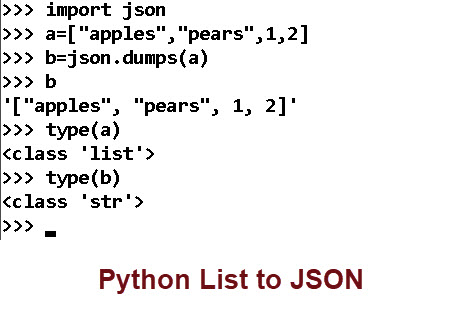

The ProfileEncoder subclass simply checks whether the object being encoded is of type CustomProfile and if it is it returns the attributes of the class as a dict.
DECODE JSON STRING PYTHON HOW TO
This time it works without a hitch! This is because the dump method knows how to encode the profile thanks to the ProfileEncoder subclass.

With open( "new_profile.json", "w") as f: If isinstance(custom_obj, CustomProfile): Let's create a subclass and tell it how to serialize the CustomProfile object: However, you can subclass it and inform it about additional mappings and methods of performing serialization. And as you saw, this class is aware of only a limited number of mappings between JSON and Python. Luckily, it provides us with a way to instruct it on how to do so.īy default, the json module uses the json.JSONEncoder class to perform the serialization. Python has no idea how to serialize our custom Python object. Raise TypeError( f 'Object of type ' TypeError: Object of type CustomProfile is not JSON serializable Go to the very top of the app.py file and add this import:įile "/Users/yasoob/.pyenv/versions/3.10.0/lib/python3.10/json/_init_.py", line 179, in dumpįile "/Users/yasoob/.pyenv/versions/3.10.0/lib/python3.10/json/encoder.py", line 438, in _iterencodeįile "/Users/yasoob/.pyenv/versions/3.10.0/lib/python3.10/json/encoder.py", line 179, in default To make use of the json package, you need to import it into your Python projects. This file will store all of the Python code. Then create a new app.py file in this directory.
DECODE JSON STRING PYTHON CODE
This will contain all the code you will write in this tutorial. As you saw earlier, JSON objects and Python dictionaries look very similar and if you do not pay attention, you might even confuse one for the other.įirst, go ahead and create a new directory named json_tutorial. This has long been a part of Python and can help you in converting JSON to Python and vice-versa. Python has extensive built-in support for JSON via its json package. Now that you know what JSON is, what it looks like, and why it is popular, let's take a look at how to work with JSON in Python.

This flexibility makes it an ideal choice for representing complex data structures in a simple and intuitive format.


 0 kommentar(er)
0 kommentar(er)
